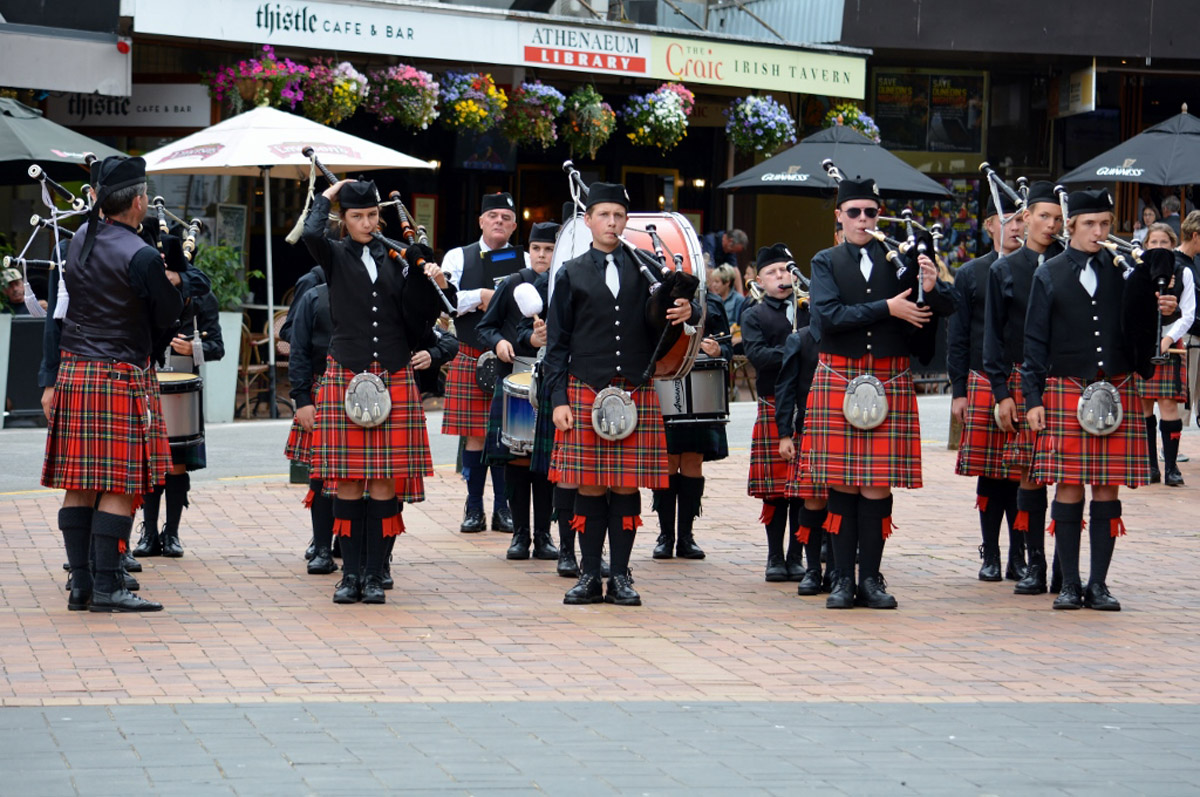Pipe Bands – An unlikely Commonwealth musical tradition
July 19by Ian Xu
One common thread linking your nation with the rest of the Commonwealth may be more perceptible than you think—in fact, it’s hard not to hear it.
Embedded in communities around the world, bagpipe & drum bands (known as pipe bands) are a remnant legacy of British military origin that many nations have embraced as their own.
Perhaps it’s because the skirl of the pipes seems to stir up emotions wherever they’re played and heard; whatever the case, to many, they’re an indispensable part of parades and graduations.
Though the bagpipes and its associated culture may seem like a cultural idiosyncrasy unique to the Scots, the truth is that there are many similar indigenous musical traditions spread across the World. Bagpipes of all shapes and sizes can be found in an extensive geographic region stretching from the British Isles to the Indian subcontinent. Nevertheless, the Scottish Great Highland variety is probably the most recognized type of bagpipes. But why is this particular type of bagpipes—and pipe bands for that matter—so widespread?
The Great Highland bagpipes’ place in global consciousness should be attributed to British colonialism. The Royal Scottish Pipe Band Association indicates that the pipe band itself originated in the British Army, where they once served a practical purpose: marching bands formed of pipers and drummers (who themselves are recorded to have been around for even longer in the martial context) within Scottish regiments originally kept the rank-and-file’s morale high on long marches, as well as the cadence of their pace.
These regiments—and consequently, the bagpipes—would end up seeing tours of duty around the world, thanks to the British Empire’s vigorous expansion. Besides the fact that Scottish regiments would be garrisoned around the world, frequently featuring their bands in all sorts of public displays and consequently spreading pipe band culture, many Scots emigrated to the colonies to eke out a living. Where there was a significant proportion of Scots in the population, there would usually be a band established in affiliation with a local army regiment or police force.
Even though the sun has set for the British Empire, these bands continue to play on. Today, there are pipe bands in the Scottish tradition on nearly every continent, whose numbers are not sustained as much by Scottish immigrants as locals who have eagerly taken up the pipes and drums. Many civilian bands have since sprung up, which has significantly helped make playing in a pipe band an accessible social activity. From Singapore to Sydney; Harare to Hong Kong; pipe bands are very much a vibrant tradition in many parts of the Commonwealth. You certainly wouldn’t be wrong in making the assessment that the pipe band is equally culture-transcending as conventional musical ensembles like the symphonic orchestra.
Countries with stronger piping traditions hold competitions where bands are judged on a variety of musical criteria. You may be able to witness such a spectacle at a Scottish festival—or as they’re commonly referred to, a “highland games”. As a standalone event, the World Pipe Band Championships takes place every August on Glasgow Green along the River Clyde, with hundreds of participant bands vying for the chance to be recognized as World Champion pipe band in their respective grade. There are bands that exist solely to compete, which should illustrate to you just how seriously many pipers and drummers take their craft.
I think the bagpipes’ musical roots in folk music is part of the pipe band’s appeal and continued survival. There isn’t much of an elitist air surrounding the instrument and its music, which factors into its accessibility. Marches, an integral part of pipe bands’ repertoire, always rouse patriotic fervour given the right circumstances, so it’s no surprise pipe bands are able to strike a chord in audiences’ hearts on Remembrance Day parades and other solemn functions. Pipe bands also play dance music to accompany Highland & Irish dancers, whose displays of precise footwork are equally mesmerizing to viewers as the intricate fingerwork demanded from pipers and drummers.
The next time you attend a parade in your community, and are in the midst of enjoying its sights and sounds, keep your eyes peeled and ears covered (just one set of bagpipes is as loud as a chainsaw) for these unique bands from an era bygone.
Photo credits: Smith via Flickr
A band from the ILT City of Invercargill Highland Pipe Band organization, based at the southernmost tip of New Zealand, gets ready to play in competition.






